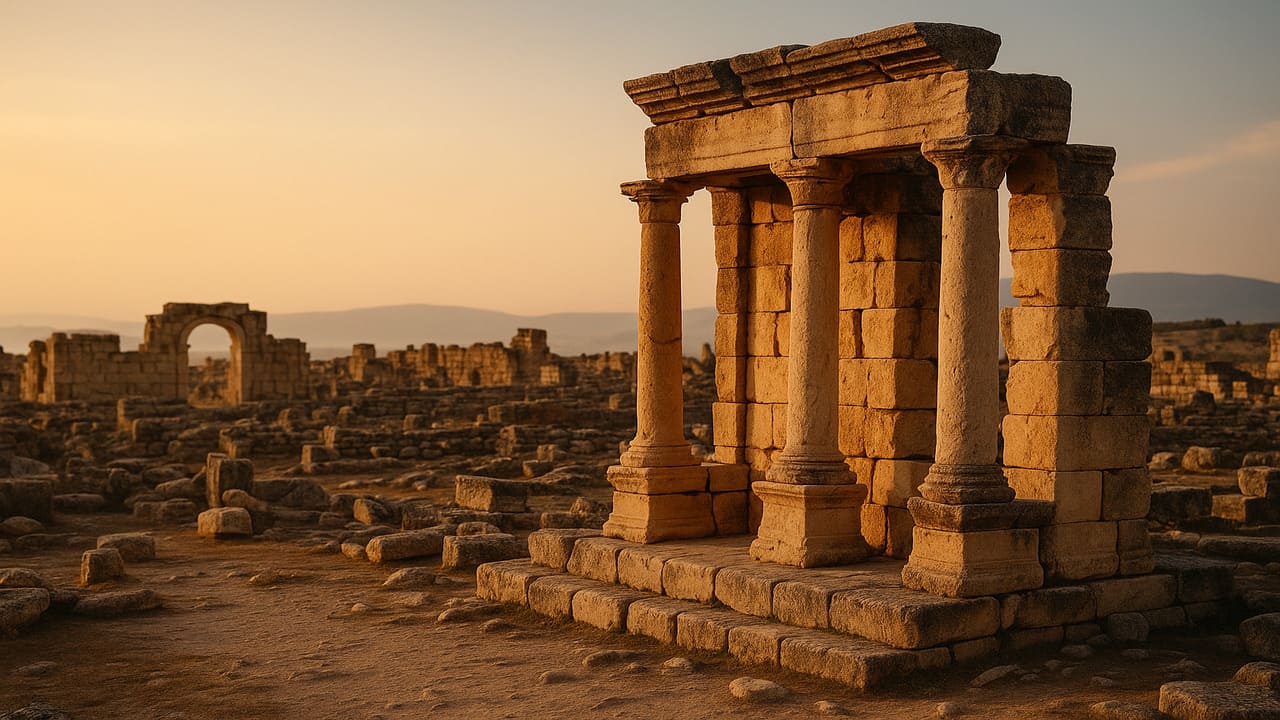
Thorn Ville Church – The land of Israel is often referred to as a living Bible, where layers of history, culture, and faith converge in every stone. For believers and scholars alike, archaeological discoveries in Israel offer more than historical insight they offer physical links to the stories recorded in the Old Testament. Among the most compelling of these discoveries are the remains of Ancient Temple and cultic sites that appear to validate or at the very least, parallel the biblical accounts of worship, monarchy, exile, and divine encounter.
From highland altars to urban sanctuaries, these ruins provide windows into Israel’s religious past, aligning with the timeline, geography, and themes of the Hebrew Scriptures.
One of the most fascinating temple ruins in Israel is located at Tel Arad, in the Negev Desert. Excavations here revealed a fortified city with a unique temple structure, built in a style strikingly similar to Solomon’s temple in Jerusalem, complete with a holy of holies, incense altars, and stone masseboth (standing stones).
Dating to the 8th century BCE, the Tel Arad temple is believe to have serve as a local Judahite religious center. What makes it particularly intriguing is the evidence suggesting dual worship practices possibly Yahweh alongside other deities, something the prophets fiercely condemned in the Old Testament.
This site affirms the biblical theme of religious syncretism in Judah, as recorded in books like Kings and Chronicles. It also offers insight into the decentralization of worship, which eventually clashed with reforms led by kings like Hezekiah and Josiah, who sought to centralize religious practices in Ancient Temple of Jerusalem.
Read More: Human Trafficking in Conflict Zones: The Rising Threat
According to the Book of Joshua, after the Israelites enter Canaan, the Tabernacle the portable dwelling place of God’s presence was set up at Shiloh (Joshua 18:1). Archaeological digs at Tel Shiloh, located north of Jerusalem, have uncovered remains of massive stone structures, pottery dating back to the Iron Age, and signs of a long-term settlement that could support the biblical claim.
While no physical evidence of the Tabernacle’s tent-like structure remains, the topography of the site suggests a flat, rectangular area capable of holding the tabernacle as described in biblical dimensions. Researchers have also uncovered evidence of ritual activity, including animal bones and storage vessels consistent with priestly service.
Shiloh’s destruction thought to be at the hands of the Philistines aligns with the biblical account in 1 Samuel, when the Ark of the Covenant was capture and Shiloh cease to be Israel’s religious center.
Following the division of the united monarchy under Solomon, the northern kingdom of Israel established rival centers of worship to Jerusalem. According to 1 Kings 12, King Jeroboam erected golden calves in Dan and Bethel as alternative worship sites.
Archaeologists have uncovered the remains of a large cultic complex at Tel Dan, complete with a high place (bamot), sacrificial altar, and stairways. A massive basalt platform found at the site is believe to have supported a shrine or idol.
Though clearly condemned in the biblical narrative as idolatrous, the ruins at Dan give credibility to the biblical description of northern Israel’s attempt to establish a rival religious system. These findings are essential for understanding the theological tension between the Ancient Temple of Israel and Judah.
Another remarkable discovery supporting Old Testament themes is a temple-like structure found in Lachish, a key city in the Kingdom of Judah. While the temple itself was modest in scale, it revealed a number of religious artifacts, including inscribed blessings and ritual items that echo the priestly texts of the Bible.
The Lachish Letters, discovered in a nearby guardhouse, are especially compelling. These ostraca (pottery fragments with writing) include military and administrative communications from the time of King Zedekiah (late 6th century BCE), aligning with the period just before Judah’s fall to Babylon.
These findings offer glimpses into the social, political, and religious climate of Judah as described in the books of Jeremiah and Kings right before the exile to Babylon.
Rather than ending with a typical conclusion, it’s essential to reflect on how these archaeological sites continue to shape modern biblical understanding and faith identity.
For many, visiting these ancient temple ruins is not just an academic endeavor it’s a spiritual pilgrimage. Walking the dusty paths of Shiloh or examining the stones of Tel Arad fosters a deeper connection to the narratives that have shaped Judaism and Christianity for millennia.
Moreover, this discoveries challenge and enrich how the Bible is read. They show that the Scriptures are root in real places, cultures, and historical transitions. Even when interpretations differ, the presence of these ruins affirms that Israel’s ancient worship was tangible, political, and profoundly influential.
In a world of digital expression and modern distractions, these ancient ruins invite us to pause, to look back, and to consider the enduring human desire to build, remember, and encounter the divine.
Thornville Church - Your Source for Biblical Inspiration - Across changing empires and cultures, historic churches preserved Christian teachings with…
Thornville Church - Your Source for Biblical Inspiration - The miracle of spiritual deliverance appeared in Philippi when Paul freed…
Thornville Church - Your Source for Biblical Inspiration - Historians now highlight how women in early church shaped theology, leadership,…
Thornville Church - Your Source for Biblical Inspiration highlights how church orientation toward east shapes Christian worship, architectural symbolism, and…
Thornville Church - Your Source for Biblical Inspiration reports that recent necropolis discoveries at Colossae are reshaping how scholars read…
Thornville Church - Your Source for Biblical Inspiration highlights how oldest church sites 2025 continue to stand as living testaments…